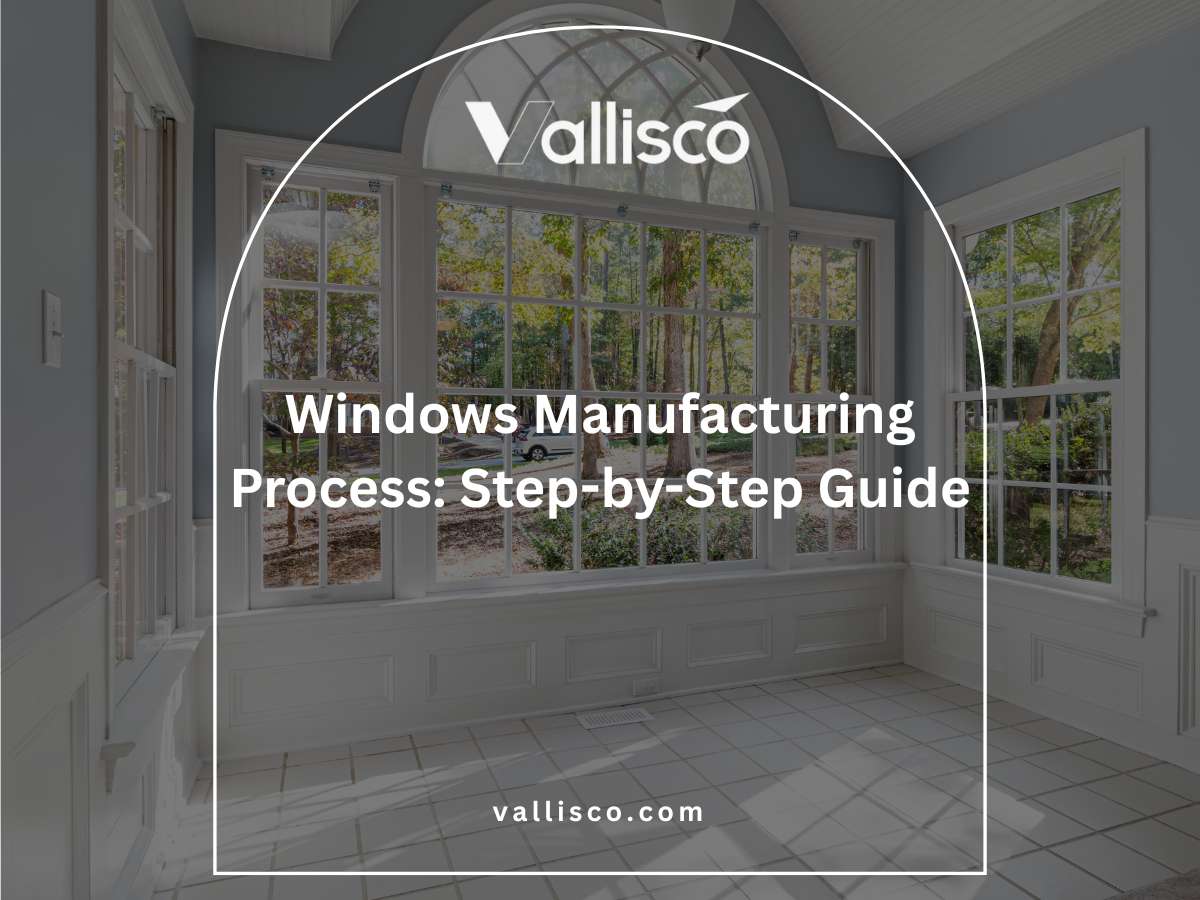When a client once asked me to source commercial sectional doors, I nodded like I knew what I was doing. Truth is? I didn’t even know what questions to ask.
If you feel the same way unsure whether these doors fit your needs you’re in the right place.
I’ve been working in the doors and windows industry for years now. I’ve made the mistakes, seen what works, and learned what doesn’t so you don’t have to.
In this guide, I’ll walk you through the basics: how these doors work, where they’re most useful, what to watch for in pricing, and how to know if they’re right for your building.
This isn’t sales fluff. It’s practical, real-world advice to help you decide if commercial sectional doors are the right call for your project, your budget, and your peace of mind.
So let’s begin!
1. What Are Commercial Sectional Doors?
A commercial sectional door is made of horizontal panels connected by hinges that move together in sections. Instead of swinging out, it lifts straight up and follows tracks along the ceiling, saving space and keeping the floor clear. You’ll often see them in garages, warehouses, fire stations, and workshops.
These doors can be lifted by hand with the help of a spring system or powered by a motor at the press of a button. Rollers glide along steel tracks, making the movement from vertical to horizontal smooth. After seeing how they solve space issues, I recommend them often.
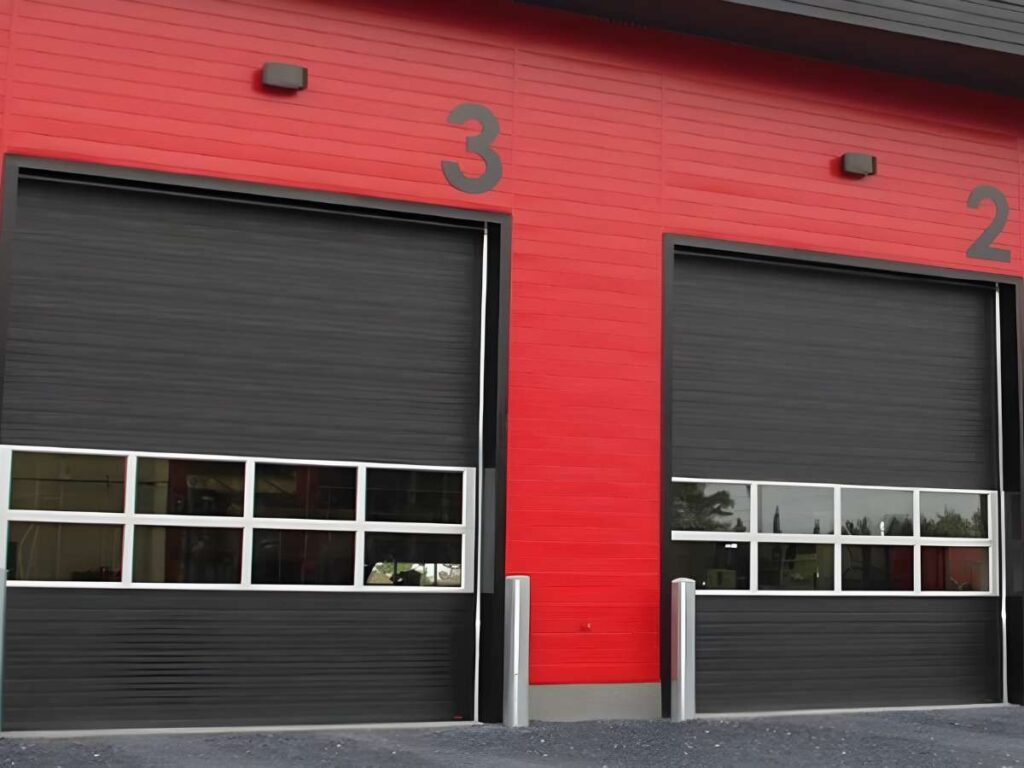
2. Types of Sectional Doors Based on Operation & Track System
On one warehouse project, we picked a sectional door without checking the track fit. The ceiling was too low, and it delayed the job. That’s when I learned how much the operation style and track system matter.
This chart shows which types fit best and which are not ideal, so you can avoid the same mistake.
| Type | Description | Ceiling Height Needed | How It Works | Not Ideal For | Best For |
| Manual Operation | Opened by hand, supported by springs | Any height | You pull the door up yourself, usually with a handle. | Very large or heavy doors used frequently | Small garages, back storage areas |
| Motorized Operation | Controlled by an electric motor | Any height | Press a button to open or close the door automatically. | Buildings without stable power supply | Busy hotels, shops, loading zones |
| Smart/Remote-Controlled | Adds timers, sensors, or app control | Any height | Doors can open on schedule or by phone remote. | Spaces without reliable internet or where tech is unnecessary | Warehouses, delivery bays |
| Standard Lift Track | Most common track style | 8–10 feet (standard) | Door rises a little, then slides flat under the ceiling. | Low ceilings or limited headroom | Garages, hotel service entries |
| High Lift Track | Extended vertical rise before turning | 10–14 feet or higher | Door moves up higher before sliding inward. | Spaces with low ceiling clearance | Greenhouses, storage areas |
| Vertical Lift Track | Straight-up movement, no ceiling track | Full wall height | Door slides straight up with no horizontal turn. | Areas needing frequent quick access | Tight service corridors, tall storage walls |
| Low Headroom Track | Works in short spaces | Under 8 feet | Special tracks help fit the door in tight ceilings. | Spaces needing high clearance or frequent large deliveries | B&Bs, villas, retrofits |
Before picking one, grab a tape measure. Your ceiling height plays a big role here. A site-readiness checklist can also help before installation day.
3. Material Options and Their Trade-Offs
When I first started working with sectional doors, I thought the material was just about looks. I quickly learned it affects weight, durability, insulation, and maintenance. The right choice can make your door easy to use and long-lasting. The wrong one can bring extra repairs and energy costs.
Steel Sectional Doors
Steel sectional doors are strong, long-lasting, and handle frequent use well. They can be single-layer, double-layer, or insulated. While they resist impacts, they can rust if the coating wears off. I’ve found steel works best in busy spaces where security is important.
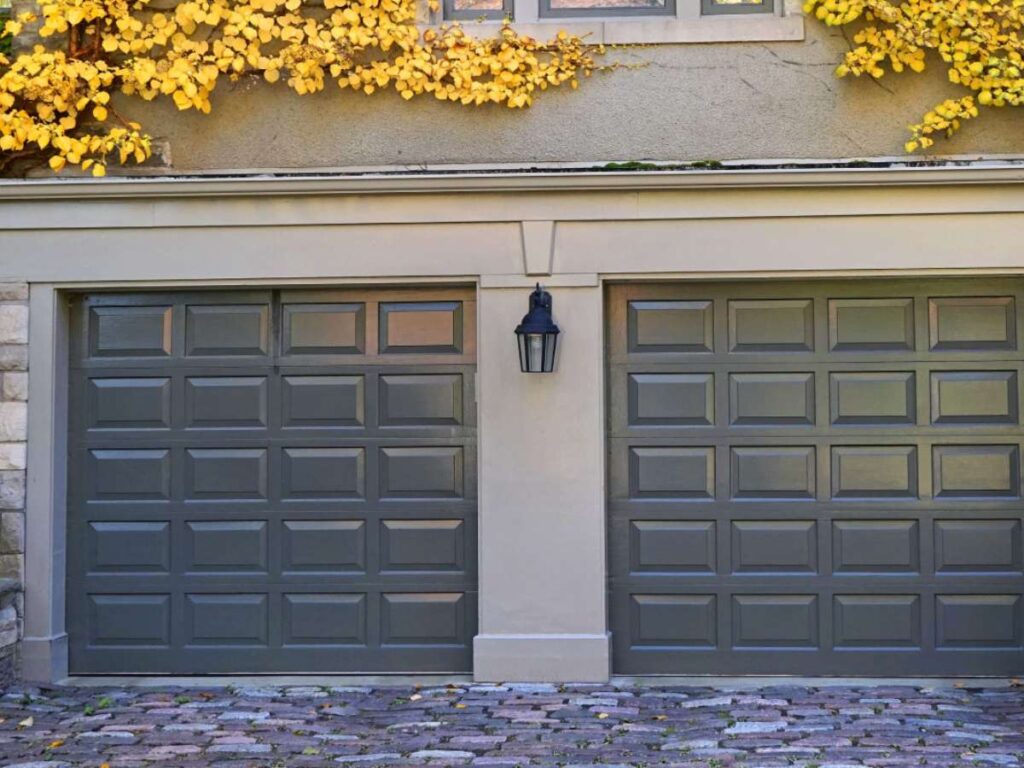
Aluminum Sectional Doors
Aluminum sectional doors are light and naturally resist rust, making them ideal for humid or coastal areas. They often feature glass panels for natural light. However, aluminum can dent more easily than steel, so it’s less suited for high-impact areas.
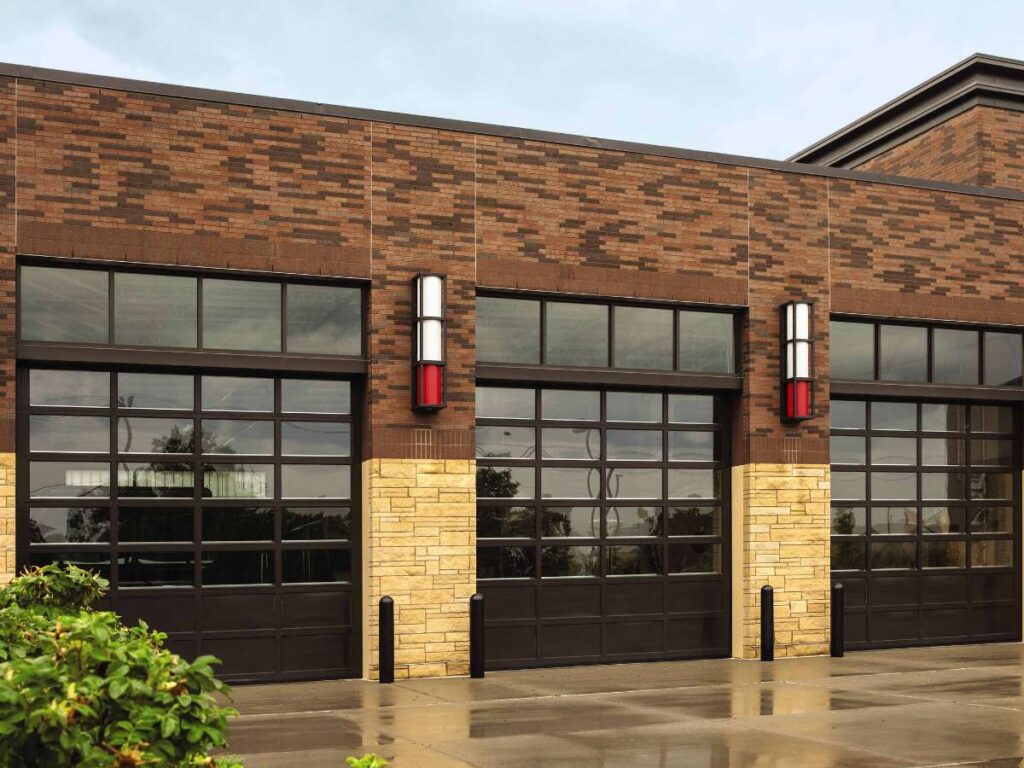
Wood Sectional Doors
Wood sectional doors offer a warm, classic look you cannot achieve with metal. They can be stained or painted to match the building’s style. However, they require regular upkeep to protect against rot, warping, and pests. I’ve seen wood sectional doors work beautifully in boutique hotels or villas where style matters as much as performance. They may not be the best fit for busy warehouses or damp environments.
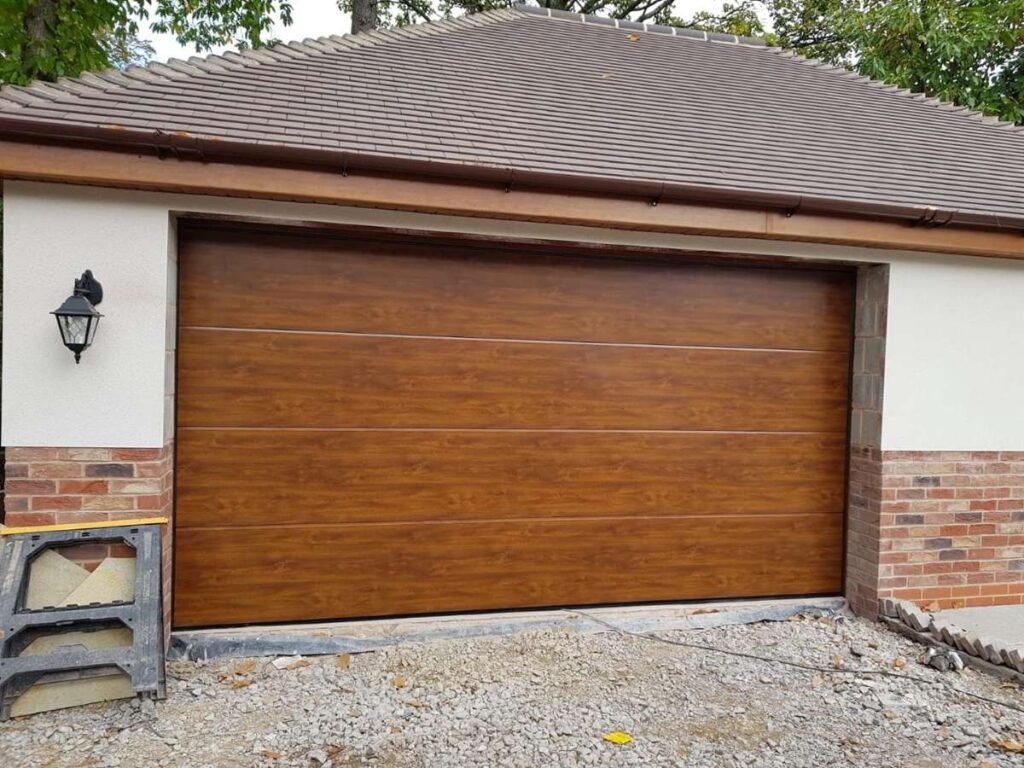
Composite Sectional Doors
Composite sectional doors combine wood fibers and synthetic resins. They mimic the look of wood but offer better resistance to moisture and pests. They require less maintenance than real wood but often cost more upfront. In my projects, composite sectional doors have been a smart choice for clients who want the appearance of wood without the same upkeep demands.
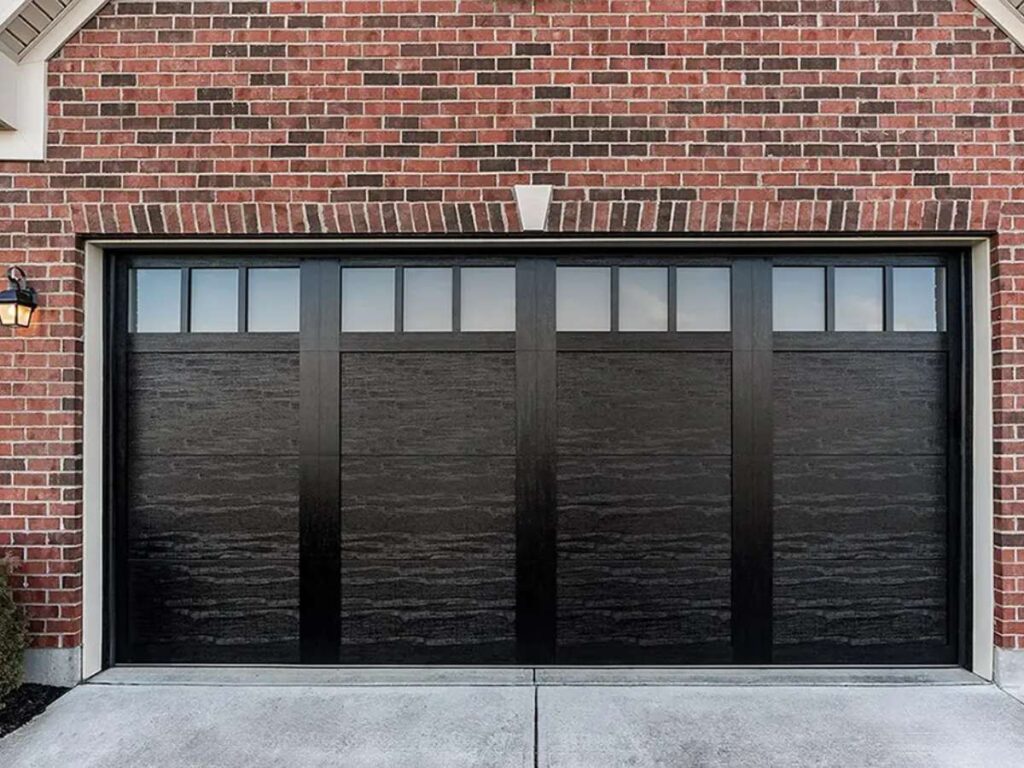
4. Key Performance Features to Evaluate
Early in my work with commercial sectional doors, I focused too much on looks and price. It didn’t take long to realize that performance features make the biggest impact. They influence daily use, long-term costs, and even safety. If you’re comparing options, here are the areas worth paying close attention to.
Insulation Value
Insulation, measured in R-value, shows how well a door keeps heat in or out. A higher R-value means better temperature control, which can reduce heating and cooling costs. I’ve seen warehouses lower energy bills simply by choosing insulated sectional doors instead of basic, uninsulated ones.
Security Features
Security isn’t only about locks. It’s also about panel strength, track design, and tamper-resistant hardware. One client upgraded to reinforced steel panels after repeated break-in attempts, and the problem stopped. Strong materials combined with a reliable locking system can protect valuable inventory.
Weather Sealing
Weather seals run along the edges to block drafts, dust, and moisture. They help keep the interior comfortable and protect stored goods. In coastal or windy areas, good sealing can also prevent corrosion and water damage.
Noise Reduction
Noise control depends on both materials and construction. Insulated panels often reduce sound better than single-layer designs. In busy areas, this helps keep work environments quieter. I’ve found clients in hospitality settings value this feature far more than industrial users.
Smooth Operation
The hardware matters as much as the panels. Quality rollers, tracks, and springs reduce strain and let the door glide easily. Poor components can cause jerky movement and early wear. Spending a little more on better hardware can save repairs and frustration later.
5. Common Applications for Sectional Doors
Sectional doors are versatile, which is why I’ve installed them in so many different types of buildings. The way they open straight up and follow ceiling tracks makes them work in spaces where other door types would get in the way. If you are thinking about where they might fit into your project, these examples can help.
Garages
These doors open vertically, allowing vehicles to park close without blocking movement. Switching from swing-out designs often gives property owners more usable space both inside and outside. They are also easier to automate, making daily use more convenient.
Warehouses
Sectional doors create wide, clear openings for trucks and forklifts. When insulated, they also help maintain indoor temperatures, reducing heating or cooling costs over time. Their durability makes them a long-term solution for high-traffic loading areas.
Fire Stations
Motorized systems can open the door before a truck even reaches it. This can save critical seconds during emergency calls and improve response times. These doors are also built for repeated cycles, handling constant use without frequent breakdowns.
Workshops and Manufacturing Areas
The track system runs along the ceiling, leaving space for cranes, lighting, or other equipment. This setup also provides an unobstructed opening for moving large materials. It’s a practical choice for businesses that need both flexibility and efficiency.
Hospitality and Specialty Buildings
Sectional doors are often used for service entries, storage access, or ventilation in hotels, inns, B&Bs, and greenhouses. Material and finish choices can be made to match the building’s architecture. This makes them both functional and visually consistent with the property design.
Seeing how sectional doors adapt to such different spaces is why I recommend them often. They bring both function and flexibility, making them a reliable choice for many industries.
6. Maintenance & Servicing Needs
Even the best commercial sectional doors need care to keep working smoothly. I’ve seen too many cases where a small issue became a major repair simply because it was ignored. Regular maintenance not only extends the life of your door but also prevents downtime that can disrupt daily operations.
Routine Cleaning
- Surface Care: Dirt, dust, and debris can build up on panels and tracks over time. Cleaning the exterior and interior surfaces a few times a year keeps the door looking good and prevents grit from wearing down moving parts.
- Track and Roller Cleaning: Wiping down the tracks and rollers removes buildup that can cause the door to stick or operate unevenly.
Lubrication of Moving Parts
- Smooth Operation: Hinges, rollers, and springs work under constant motion. A silicone-based or lithium-based lubricant applied every few months can reduce friction and wear.
- Noise Reduction: Proper lubrication also helps reduce squeaks and grinding sounds that develop over time.
Inspection and Adjustment
- Safety Checks: Springs, cables, and brackets should be inspected for wear or damage. These parts hold a lot of tension, so any problem should be fixed by a professional.
- Balance Testing: A door that feels heavy or uneven may be out of balance, which can strain the opener and shorten its lifespan.
Seasonal Preparation
- Weather Seals: Inspect bottom and side seals before extreme weather seasons. Replacing worn seals keeps out drafts, moisture, and pests.
- Winter and Summer Readiness: Doors in cold climates may need extra lubrication in winter, while sunny locations might require UV-protective finishes.
I always tell clients that maintenance is like health care for your door. A little attention at the right time saves money, reduces stress, and keeps your operations running without interruptions.
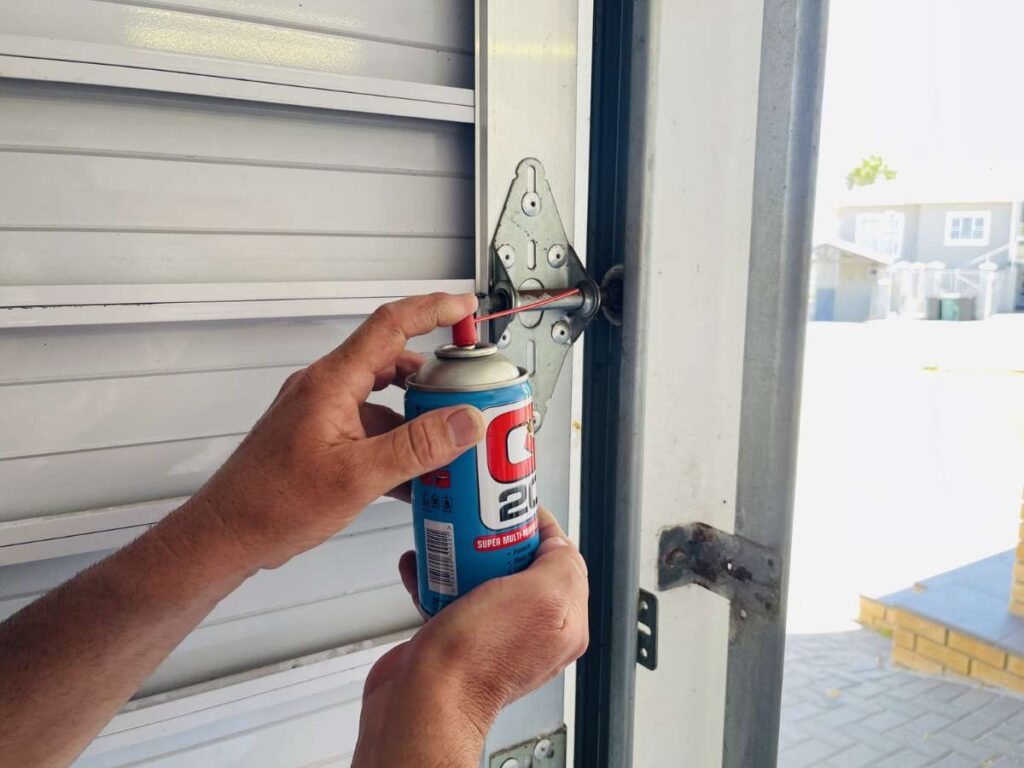
7. Mistakes to Avoid When Choosing Commercial Sectional Doors
Over the years, I’ve seen some costly mistakes made when selecting commercial sectional doors. Most could have been avoided with a little planning and attention to detail. If you’re preparing to make a choice, these are the areas to watch carefully.
Ignoring Ceiling Height and Track Compatibility
The track system must match your ceiling height for the door to work correctly. Choosing the wrong style can lead to expensive modifications after installation. I once worked on a warehouse upgrade where the track didn’t fit the clearance, and the installer had to return twice, delaying operations.
Overlooking Material Performance
Steel, aluminum, wood, and composites each offer different benefits and drawbacks. Selecting based only on appearance can lead to higher maintenance or shorter service life. Always match the material to your climate, usage level, and expected lifespan rather than focusing on looks alone.
Skipping Insulation and Weather Seals
Uninsulated doors can increase energy costs, while poor sealing allows drafts, moisture, and pests to enter. Even if your space isn’t climate-controlled now, insulation and seals give you flexibility if your needs change later.
Choosing the Cheapest Option
Going with the lowest price often means getting lower-quality components and a shorter lifespan. Over time, this can lead to more frequent repairs and higher costs. It’s better to balance price with durability, performance, and service support.
Buying from Unverified Suppliers
One client bought a door online to save money. It arrived late, missing hardware, and had no support. Vallisco helps you avoid these headaches with in-house manufacturing, custom fitting services, and ISO 9001-certified quality systems. The result is a door that works right the first time, backed by real support instead of guesswork.
Forgetting About Maintenance Access
Some designs make future servicing difficult, which increases labor time and cost. Ask how the door will be maintained and whether replacement parts are readily available. This small step can save you trouble later.
8. Tips for Choosing the Right Sectional Door for Your Needs
Finding the right commercial sectional door is about more than choosing one that looks good. It’s about matching the door to your space, usage, and future plans. I’ve seen projects go far more smoothly when these points were considered from the start.
Measure Your Space Carefully
Accurate measurements set the foundation for a successful installation. You’ll need to know ceiling height, headroom, and side clearance before comparing designs. Without this step, you risk buying a door that requires costly modifications to fit. I’ve seen clients skip measuring, only to face delays and extra labor before the door could even be installed.
Match the Material to Your Environment
Different materials respond differently to climate and usage. Steel offers strength for heavy traffic areas, while aluminum works best in humid or coastal environments where rust is a concern. Wood adds charm but needs upkeep, and composites balance style with durability. Matching material to your setting prevents premature wear and keeps your investment performing longer.
Decide on Manual or Motorized Operation
Manual doors are cost-effective and straightforward but require physical effort to use. Motorized doors are faster and more convenient, especially for large or frequently used openings. Think about the number of cycles per day and who will operate the door. The right choice here directly impacts daily efficiency and overall satisfaction with your setup.
Consider Insulation and Sealing
Insulation improves temperature control, helping reduce heating or cooling loss. Weather seals block drafts, dust, and moisture from entering your space. Even if your building isn’t climate-controlled, these features can improve comfort and cleanliness. I’ve found that doors with proper sealing and insulation often require fewer adjustments and stay reliable longer in demanding conditions.
Factor in Maintenance Needs
Some designs make servicing straightforward, while others require more time and specialized tools. Ask how often maintenance is needed and whether replacement parts are easy to source. A door that’s simple to maintain reduces downtime and costs. Planning for upkeep from the start avoids surprises and keeps operations running smoothly.
Work With a Trusted Supplier
A reliable supplier will help you match features to your exact needs and provide proper installation. Vallisco works closely with clients to choose the right design, handle custom fitting, and offer dependable after-sales support. Having this partnership means fewer headaches during the project and confidence that your door will perform as expected.
Conclusion
When I first stood there, unsure about sectional doors, I didn’t know what questions to ask. Now, you’ve seen what they are, where they work, how to choose one, and why it matters.
The right choice saves space, money, and stress.
You’ve got the tools. You know the mistakes to avoid.
So, when will you start planning your project?
If you want guidance, I’m here to help make it simple.
Contact Vallisco today, and let’s choose a sectional door that fits your needs perfectly.
Learn More: Recommended Reads
Want to see more products? We’ve got plenty of options that might just be the perfect fit for you:
Still haven’t found what you’re looking for? Don’t hesitate to contact us. We’re available around the clock to assist you.



